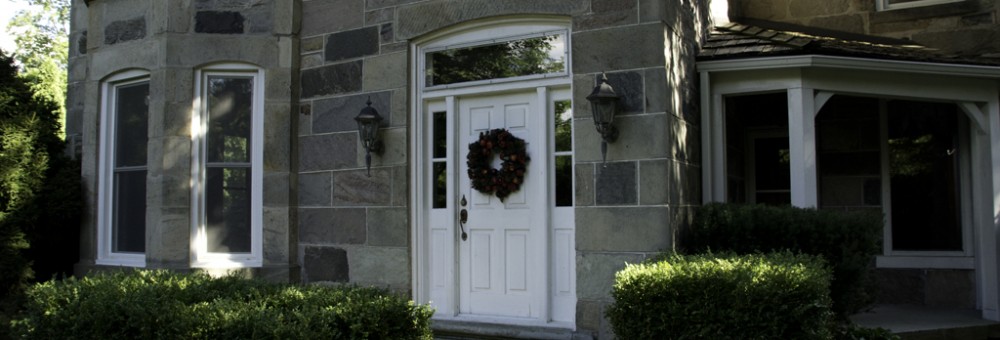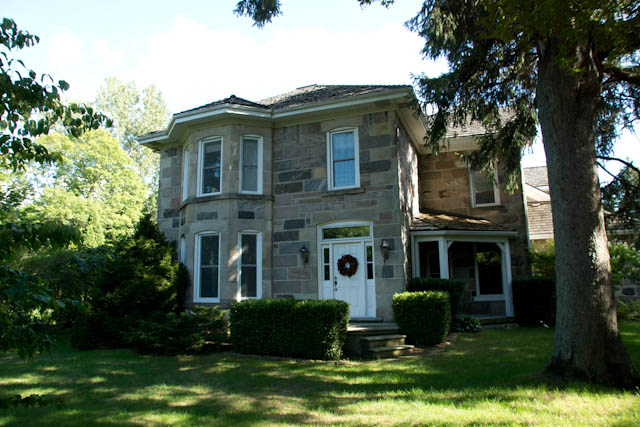With a conditional offer in hand, our next challenge was lifting said conditions. A rural property is fairly similar to an urban one in terms of offering: they are usually conditional on finance, insurability and an inspection. Additional conditions are added that require the septic to be pumped and testing of the well water, and that pretty much covers things off.
An inspection of a 150 year old property, however, is not the same as the inspection of a new house in a subdivision that was built a few years ago. They didn't have building codes in the 19th century. There were conventions, to be certain, but there have been good builders and bad builders since the dawn of time. And 'caveat emptor' has been a commonplace expression since Latin was in regular use.
Given that we were making a significant investment in a building that had aspects constructed in several different periods, I wanted someone that knew what they were doing. Finding that someone, however, is much easier said then done.
Home inspections is an industry that is rife with abuses. Not that this is exactly a unique situation, mind you. But pretty much anyone can put out there shingle and call themselves a home inspector. And many apparently do. This, in fact, is one of the reasons for the popularity of the show 'Holmes Inspection' on HGTV. We get to watch episode after episode of disasters uncovered post-inspection, inevitably followed by Mike Holmes' crew gleefully ripping down drywall.
The problem if qualifications is apparently particularly rife in Ontario, where the provincial association responsible for the development of standards was pretty much ignoring this responsibility. A good summary of the issue is summarized in this article. While there is now a national certification body, however, and an active provincial organization, distinguishing the really good from the merely competent is a struggle.
Early in my research I found one inspector that I really, really wanted to inspect the house. Cam Allen has a great deal of experience in inspections, particularly in terms of heritage properties, and writes a regular column on the subject for the Kingston Whig Standard. Sadly, he's based in Kingston, and our house isn't; hiring him for the job wasn't going to happen, but he does provide a huge array of resources in his columns and web site for anyone looking to buy a heritage property.
Following on the success of the television program, Mike Holmes actually has his own inspection company, Mike Holmes Inspections. If you watch his show, he reinforces time and again the importance of checking qualifications. Making sure the person you hire is experienced. Checking references. Great advice that I would reinforce to anyone hiring a professional, regardless of discipline.
Given the apparent credibility (and the significant premium his company charges) I decided to check them out. And I have to say that while the show is great, and Holmes has written a really solid book on home inspections that I would recommend to anyone, I am less than impressed with the company and their approach to customer service. Calling for more information, I first got a recording that said to wait on the line to book an inspection, and otherwise go to their website for more information. For someone who had read the web site and had more questions, there wasn't another option offered.
Waiting anyway, I got a call centre agent that was happy to book an inspection, but had minimal information by which to qualify who the person would be that would do our inspection if we chose to proceed with them. Inspectors aren't assigned until after an inspection is booked. While there are general qualifications for their inspectors, they don't share individual names, qualifications or references. Do they have inspectors qualified in the inspection of heritage properties? No. Right, then. Time to keep looking.
I did call around, and talked to several different people. Questions I recommend asking: What is your experience? What are your qualifications? What is your professional background prior to becoming a home inspector? What is your process for conducting an inspection? What tools do you use? What is your experience in inspecting heritage properties? Can I have references for inspections that you have done in the past at heritage properties? The range of detail, and the range of willingness to even answer the questions, was telling unto itself.
A big point of dissension currently is the use of thermographic imaging. Anyone who has seen an inspection on Holmes Inspection has seen Mike pull out his trusty camera, and show an area with massively varying levels of surface temperature. Which is exactly what (and only what) these devices measure. I talked to inspectors that dismissed their use as irrelevant (and didn't have them, relying on their eyes, nose, screwdriver and ladder to do the job). I talked to inspectors that didn't have them, but were certified in their use, and were willing to subcontract someone to do a thermographic inspection if that is what I wanted (and that planned on getting a camera eventually, when prices came down a bit more, provided customers would pay more for its use). I talked to inspectors that said that they had value, in specific contexts, to probe for more information where the presence and source of a problem wasn't obvious.
I finally talked to one company (after calling nearly 10) that exuded confidence and competence. And, probably as a result, was booked for at least a week solid. The partners had done nearly 10,000 inspections each. Both were engineers. They had significant experience in heritage homes. They don't try to compare heritage homes to current building standards; they ask whether the property was in the condition that it should be for when and how it was actually built. They call a spade a spade, and aren't afraid to highlight a major problem if they find one. They have a thermographic camera, they use it in situations where it is required, and they don't charge extra for bringing one along.
And so, finally, we had a house inspector. Unfortunately, their availability and mine meant that our appointment isn't for another week, and it will only give us a few days afterwards to satisfy any concerns about the property. But I would rather wait longer for a good inspection, rather than getting a shoddy one done quickly. We'll see where we are in another week.


